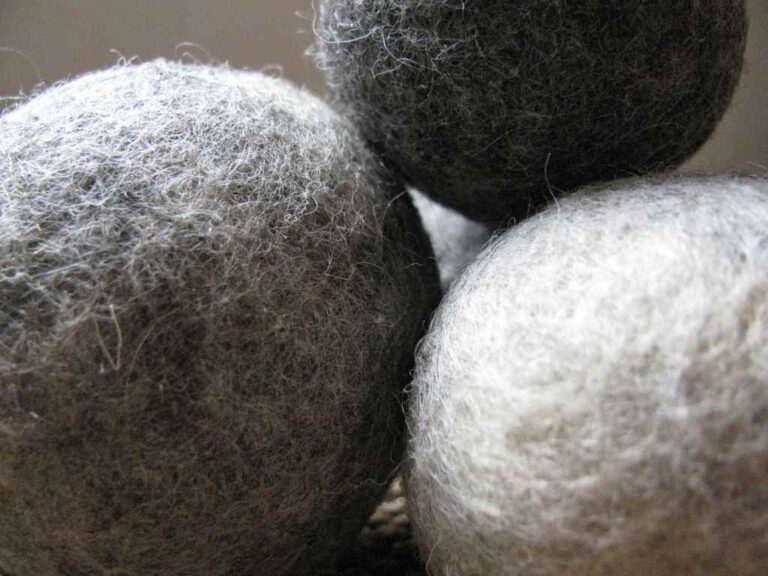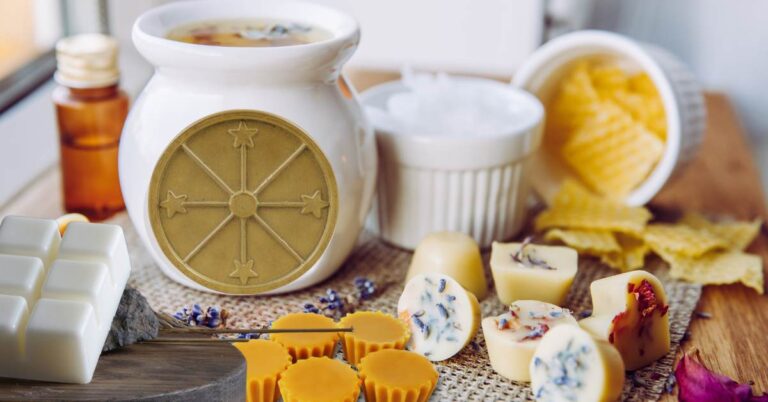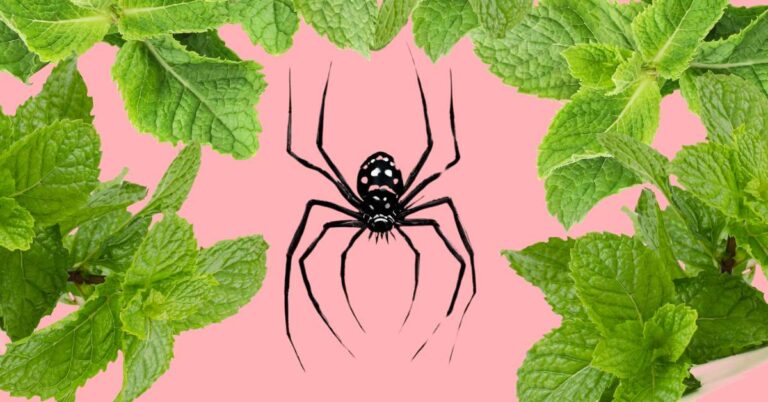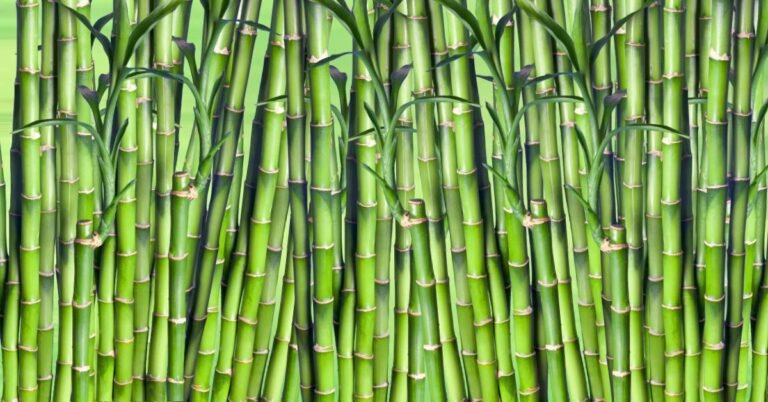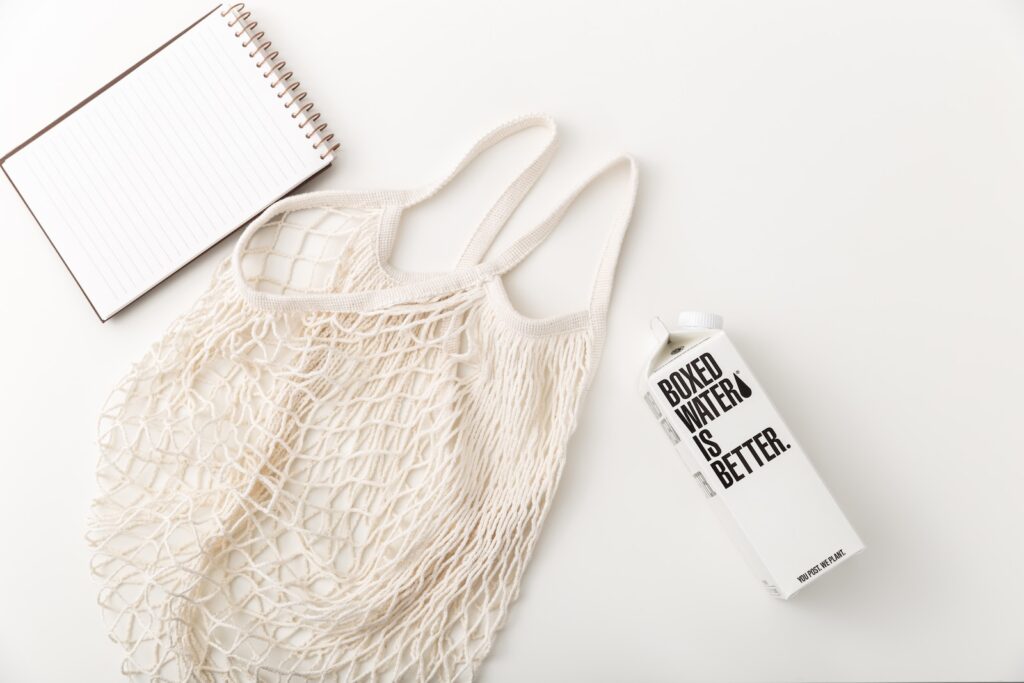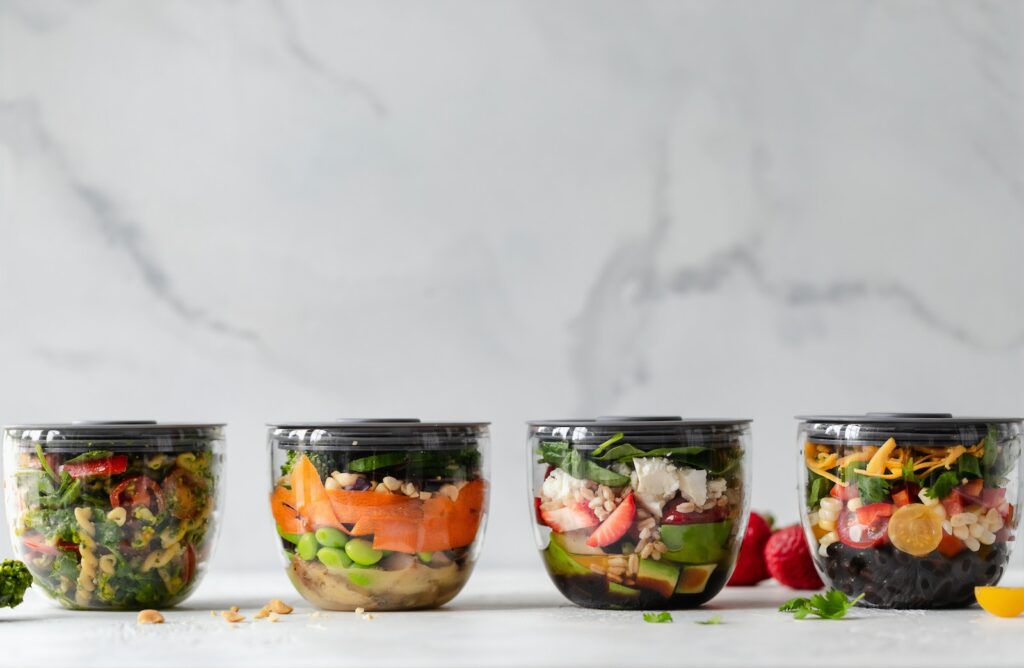Our homes should be our sanctuary. A safe place where we can breathe easy and feel good, inside and out. But the truth is, our living spaces are often filled with toxic chemicals that sneak in through the air, products we use, and food we eat. Thankfully, it’s not all doom and gloom. Today, I’m sharing some simple tweaks that can significantly slash the toxins in your home, making it a healthier haven for you and your family. And the best part? These changes are easier than you might think!
This post contains affiliate links. If you make a purchase, we may earn a small commission at no extra cost to you. Learn more.
What is Non-Toxic Living?
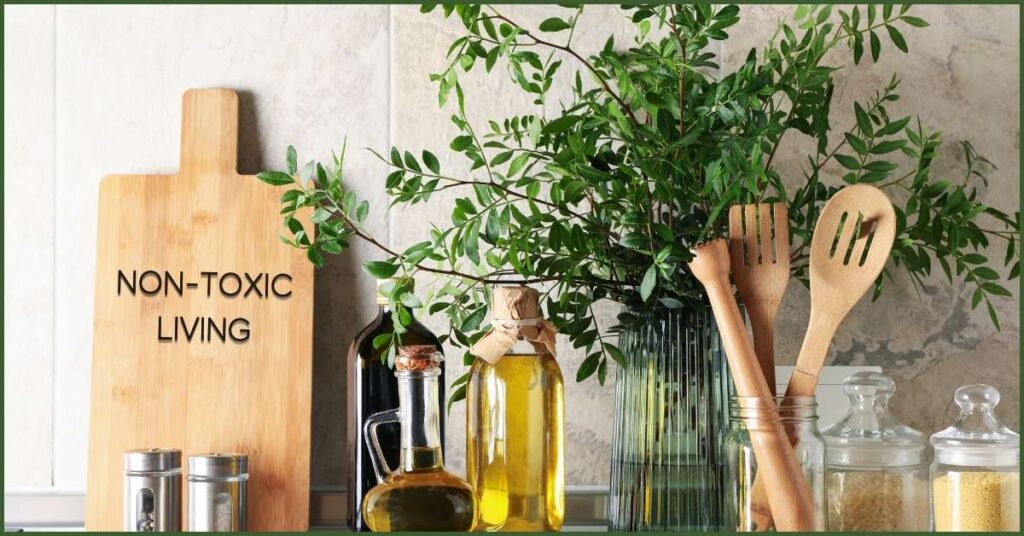
Toxin-free living is a mindful approach to everyday life that emphasizes the importance of purity in our environment. It’s about making conscious choices to avoid chemicals and substances that can harm our health and well-being. It recognizes that the products we use daily—from the pans we cook with to the sheets we sleep on—should nurture our health, not jeopardize it.
Non-toxic living is selecting products and engaging in habits free from harmful chemicals. It’s about reading labels, understanding ingredients, and recognizing that some everyday items we’ve grown accustomed to might not be as harmless as we once thought. Embracing toxin-free living also ensures our environment is safe and kind to the planet.
Why Non-Toxic Living is Essential
Why is this important? The unsettling truth is that many of us live in spaces filled with synthetic chemicals—some known to be endocrine disruptors, carcinogens, and neurotoxins. These substances can be in the non-stick coating on your frying pan, the fragrance in your laundry detergent, or the plastic of your travel water bottle.
The Health Benefits of a Toxin-Free Home
By adopting non-toxic living practices, you proactively safeguard your health. You support your immune system by reducing the burden of toxic chemicals it needs to combat. You also ensure that your living space contributes to your wellness rather than subtly depleting it. This healthy lifestyle can lead to a clearer mind, a stronger body, and a more vibrant life.
Embarking on a Non-Toxic Living Journey
Now that we understand the ‘what’ and ‘why’ of non-toxic living, let’s explore the ‘how’ with these 15 healthy home swaps and tips for a non-toxic lifestyle. Remember that any change you make matters. So whether you make one change or all fifteen, you are making a difference in your and your family’s well-being.
#1 Ditch The Fake Air Fresheners
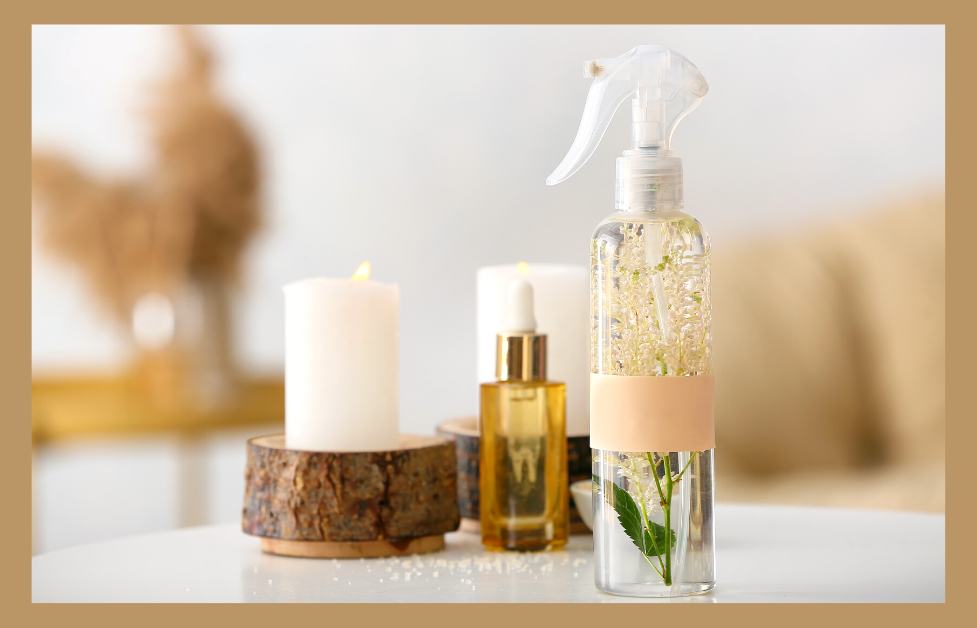
Let’s start with the air we breathe in our homes. Mainstream air fresheners may promise a burst of pine or a whiff of spring flowers, but they often deliver a cocktail of synthetic chemicals and volatile organic compounds (VOCs), increasing indoor air pollution. These artificial fragrances can act as irritants and may have long-term health impacts including skin issues, breathing difficulties, headaches, asthma attacks, heart and nervous system problems.1
The swap is simple: opt for natural alternatives. Use activated charcoal as a natural odor absorber, use only non-toxic wall plug-ins, like Aera, or create your own DIY room fragrance sprays with a few drops of pure essential oils. For an easy DIY recipe, click here. These small changes can greatly impact improving your home’s air quality.
#2 Change Your Air Filters and Add an Air Purifier
Indoor air pollution from dust, pollen, and allergens can cause various problems, including itchy eyes, runny noses, respiratory problems, drowsiness, and asthma attacks.2
Regular maintenance and timely replacement of air filters in your HVAC system can trap dust, pollen, and other airborne particles. If you want to go further, investing in a standalone HEPA air purifier like the ones by Coway, can make a significant difference, especially in high-traffic areas or bedrooms. These devices are particularly effective at capturing finer particles, ensuring that the air circulating in your home is as clean as possible.
#3 Choose Organic Produce When Possible
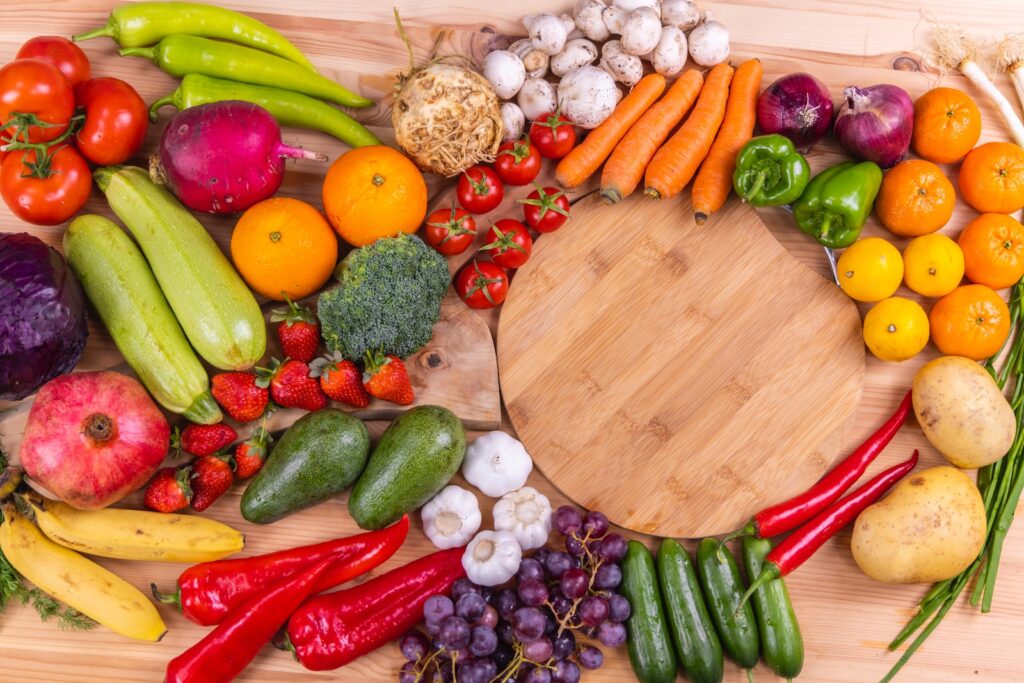
Prioritizing organic produce at the grocery store or farmer’s market, especially those on the ‘Dirty Dozen’ list, is one of the most important steps you can take to reduce exposure to harmful chemicals and toxic ingredients. This list, updated annually by the Environmental Working Group, identifies fruits and vegetables with the highest levels of pesticide residues.3 They also list the cleanest produce with the least pesticide residue, dubbed ‘The Clean Fifteen.’
The Dirty Dozen:
- Strawberries
- Spinach
- Kale & Collard & Greens
- Peaches
- Pears
- Nectarines
- Apples
- Grapes
- Bell & Hot Peppers
- Cherries
- Blueberries
- Green Beans
The Clean Fifteen:
- Avocados
- Sweet Corn
- Pineapples
- Onions
- Papayas
- Sweet Peas
- Asparagus
- Honeydew Melons
- Kiwi
- Cabbage
- Mushrooms
- Mangoes
- Sweet Potatoes
- Watermelon
- Carrots
By checking food labels and choosing organic fruits and vegetables, you significantly reduce your family’s exposure to potentially harmful chemicals while supporting eco-friendly farming practices.
While organic produce is often perceived as more expensive, the landscape is changing. Many chain stores now offer organic options at more affordable prices. Some retailers, like Costco, BJ’s, and Sam’s Club, even provide organic produce in bulk, making it easier and more cost-effective for families to make this healthy switch. This accessibility means that choosing organic, once a privilege, is now an achievable goal for a wider audience.
#4 Green Up Your Indoor Spaces
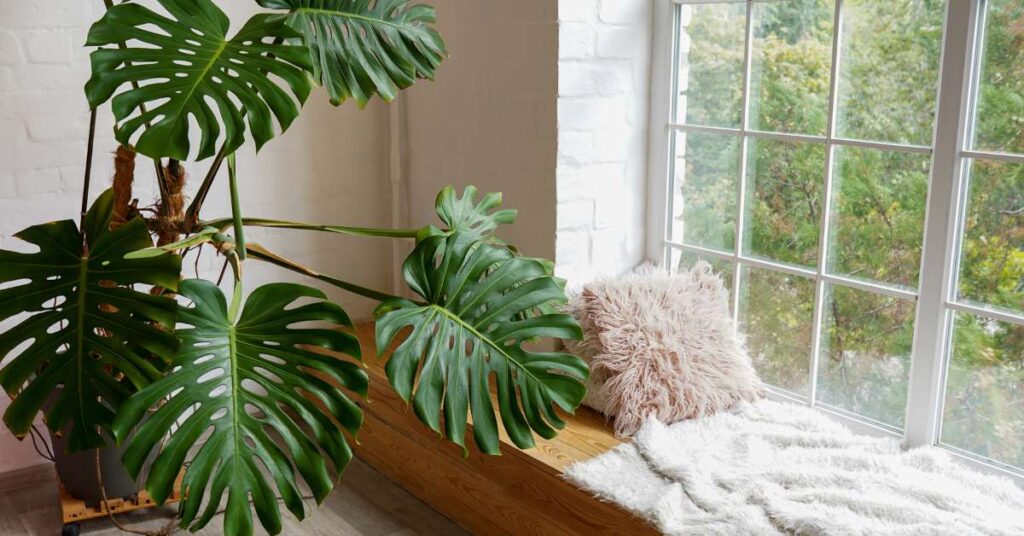
Adding houseplants to your living space isn’t just for aesthetics. Studies have shown that plants, including spider plants, snake plants, golden pothos, and peace lilies can help filter out common airborne toxins.4 However, the research is inconclusive, and there are no studies on the exact number of plants needed to filter the air.
In addition, houseplants have consistently demonstrated their ability to enhance mental health. People who live or work in hospitals, long-term care facilities, offices, and residential buildings, often experience increased productivity, improved learning abilities, and lower levels of anxiety and depression when surrounded by indoor plants.5
#5 Detoxify Your House Cleaning Routine
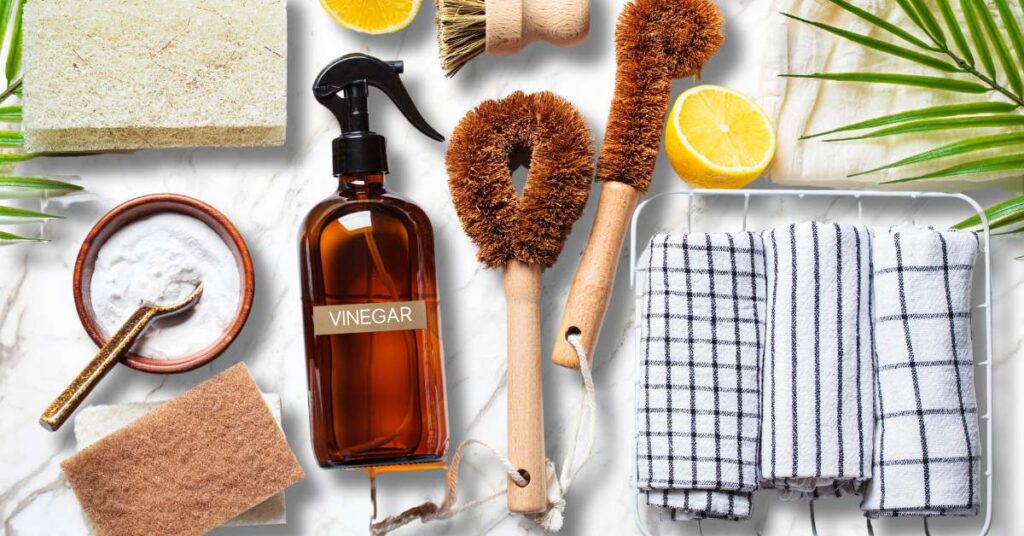
Traditional household cleaning products are often laden with harsh chemicals that can harm our health and the environment. Potential risks include chronic respiratory problems, allergic reactions, asthma, headaches, and cancer.6
Swapping these out for DIY solutions or certified toxin-free products is a straightforward and effective way to maintain a healthy home. Ingredients like vinegar, baking soda, and essential oils can create powerful and natural cleaning agents that are just as effective as their chemical counterparts but without the toxic side effects.
For example, warm water and soap can be a very effective basic cleaner, especially in a household setting. Baking soda works well for scrubbing surfaces, and a combination of vinegar and water is great for cleaning glass.
If you can’t give up your traditional cleaners, try using them every other time you clean, using natural products on the off days. That simple change alone would reduce the toxic load and cut your family’s exposure in half!

Help me get started!
Do you want to live a less-toxic, more eco-friendly lifestyle but have no idea where to begin? Here’s our “Non-Toxic 101” guide to get you started today!

#6 Use Chemical Free Laundry Products
Conventional laundry detergents and dryer sheets often contain harmful ingredients, like phosphates, dyes, sodium lauryl sulfate, dioxane, and bleach, that irritate the skin and pollute waterways.7
Opting for natural, eco-friendly laundry detergents like Earth Breeze Laundry Sheets can dramatically reduce exposure to these harmful chemicals. Using wool dryer balls rather than dryer sheets is another easy swap. Click here to learn all the benefits of switching to wool dryer balls.
These natural alternatives leave your clothes clean, fresh, and static-free. They ensure that what touches your skin all day remains free from irritating substances.
#7 Choose the Right Cookware
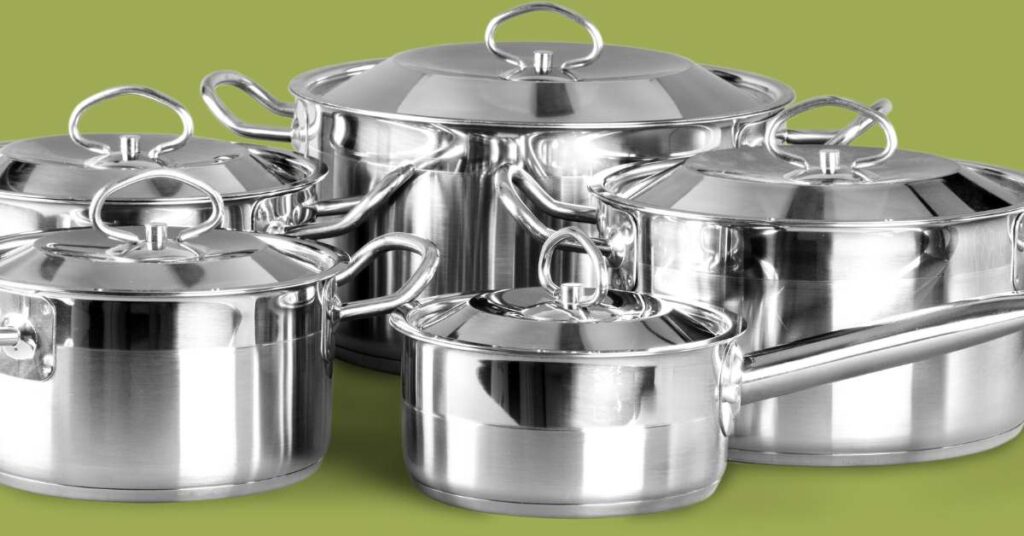
Traditional non-stick pans, while convenient, often contain chemicals that can leach into food at high temperatures. PFAS (Per- and Polyfluoroalkyl Substances), found in non-stick coatings for their water and stain resistance, pose significant health concerns, including immune system suppression and potential cancer risk.8
PTFE (Polytetrafluoroethylene), commonly known as Teflon, provides a non-stick surface but can emit toxic fumes at high temperatures, posing risks to humans and pets. PFOA (Perfluorooctanoic Acid), once a key ingredient in PTFE, is considered a likely human carcinogen. Though PFOAs have been phased out in the United States since 2015, they may still linger in older cookware and are used in other countries.
The healthier swap? Cast iron, stainless steel, glass, or ceramic cookware. For an in-depth dive into this topic and our curated list of recommended cookware, don’t miss our post on the Safest Pans to Cook With.
#8 Store Your Food Safely
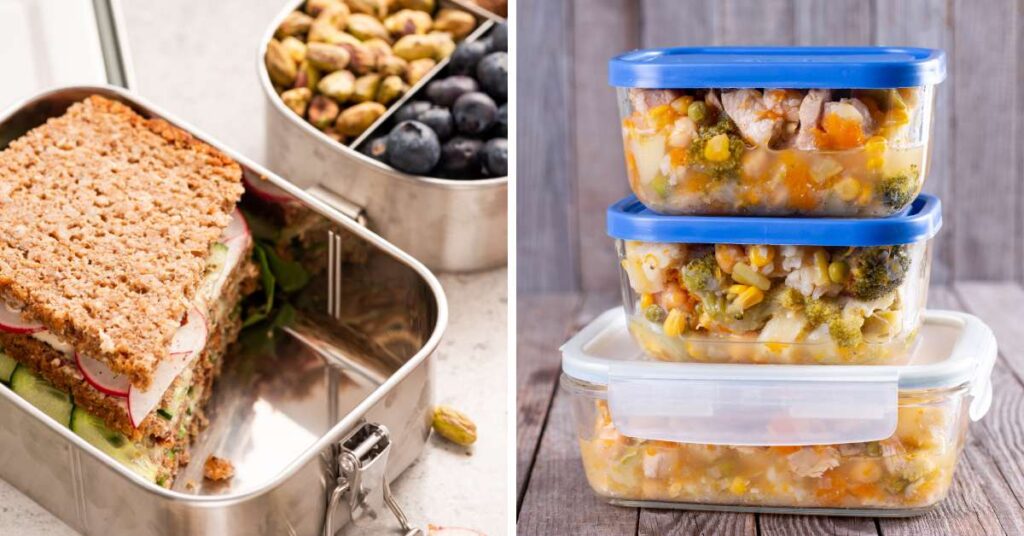
Food storage is another area where toxic chemicals can sneak into our daily lives. Plastic travel water bottles and containers, especially when used for heating food in microwaves, can release BPA and other harmful substances.
Bisphenol A (BPA) is an industrial chemical used in plastics manufacturing and added to many commercial products, including food containers. BPA exposure has been linked to several human health issues, including infertility, obesity, heart disease, type 2 diabetes, and cancer.9
The solution is simple: switch to glass or stainless steel containers. Plastic tops with glass containers are fine as they either do not touch your food or rarely do. These materials are not only safer for storing your food but are also more sustainable. They’re good for your health and the environment, ensuring your leftovers are safely tucked away, and no harmful chemicals are leached into your food. For a list of our favorites, click here.
#9 Use a Water Filter
Tap water can contain various contaminants, from heavy metals to chlorine and pesticides. The EPA lists several types of drinking water contaminants that may be of concern, including microbial contaminants, lead, nitrates and nitrites, arsenic, disinfection byproducts, pesticides, and solvents. These substances may be harmful to human health, especially children.10
A straightforward solution is to use a water filter. Whether it’s a pitcher filter, a faucet attachment, or a more comprehensive under-sink or whole house system, filtering your water is an easy way to reduce exposure to these contaminants. Drinking and cooking with filtered water is a simple yet effective step towards a non-toxic lifestyle.
#10 Choose Toxin-Free Beauty Products
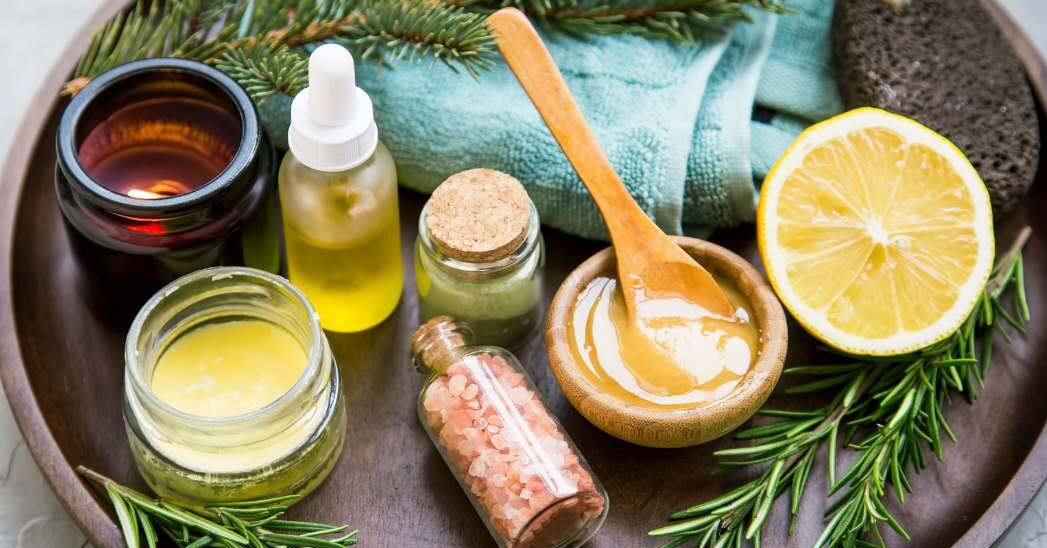
Mainstream cosmetics often harbor chemicals and synthetic ingredients your skin can absorb. The potential health risk of the harmful chemicals in beauty products includes endocrine disruption (endocrine disruptors interfere with hormones), brain, developmental, and reproductive issues, and cancer.11
Like the Environmental Working Group’s Dirty Dozen, the David Suzuki Foundation publishes a list of the “Dirty Dozen” cosmetic chemicals to avoid, including carcinogens, pesticides, and other toxic substances in cosmetics.12 David Suzuki is a prominent environmental activist, academic, and science broadcaster.
The David Suzuki Foundation Dirty Dozen:
- BHA and BHT
- Coal tar dyes
- DEA-related ingredients
- Dibutyl phthalate
- Formaldehyde
- Parabens
- Parfum (a.k.a. fragrance)
- PEG compounds
- Petrolatum
- Siloxanes
- Sodium laureth sulfate
- Triclosan
Choosing cosmetics made with natural ingredients, free from parabens, phthalates, and synthetic fragrances, reduces the risk of skin irritation and other health issues. By selecting cleaner beauty products, you’re not just enhancing your outer appearance but nurturing your inner health.
#11 Upgrade to a HEPA Vacuum
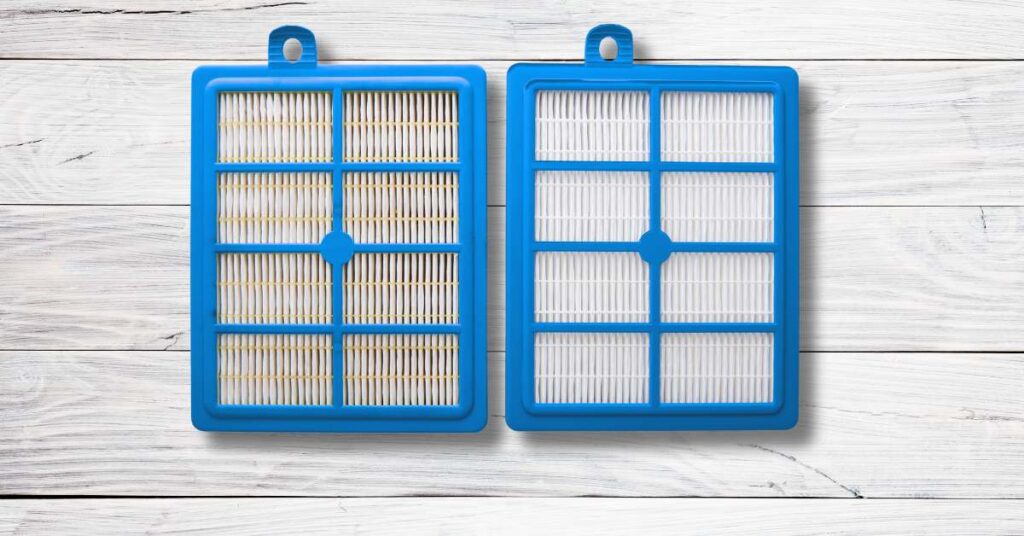
The average home is filled with dust, allergens, and microscopic pollutants. These indoor pollutants can cause itchy eyes, respiratory problems, and asthma attacks.13
Investing in a HEPA (High-Efficiency Particulate Air) vacuum is a huge step towards a healthier, toxin-free home. Unlike standard vacuums, HEPA vacuums capture a higher percentage of these particles, greatly improving indoor air quality, which is particularly beneficial for those with allergies or respiratory issues. These vacuums trap particles as small as 0.3 microns, including many common irritants, ensuring surface cleanliness and a healthier living environment.
Regular use, especially in high-traffic areas and bedrooms, contributes to a cleaner, safer home, making a HEPA vacuum essential for anyone committed to non-toxic living.
#12 Reduce Pesticide Use
Synthetic pesticides pose risks to beneficial insects, pets, and human health. The health risks associated with synthetic pesticides include certain cancers, DNA damage, oxidative stress, neurological disorders, respiratory issues, and metabolic and thyroid effects.14
Adopt organic gardening practices, including natural pest control methods like neem oil, natural fly traps, essential oil sprays, fresh herbs, coffee grounds, and citronella. These toxin-free alternatives safeguard your plants and home and maintain a healthy, chemical-free garden.15
#13 Switch to Natural Fiber Textiles
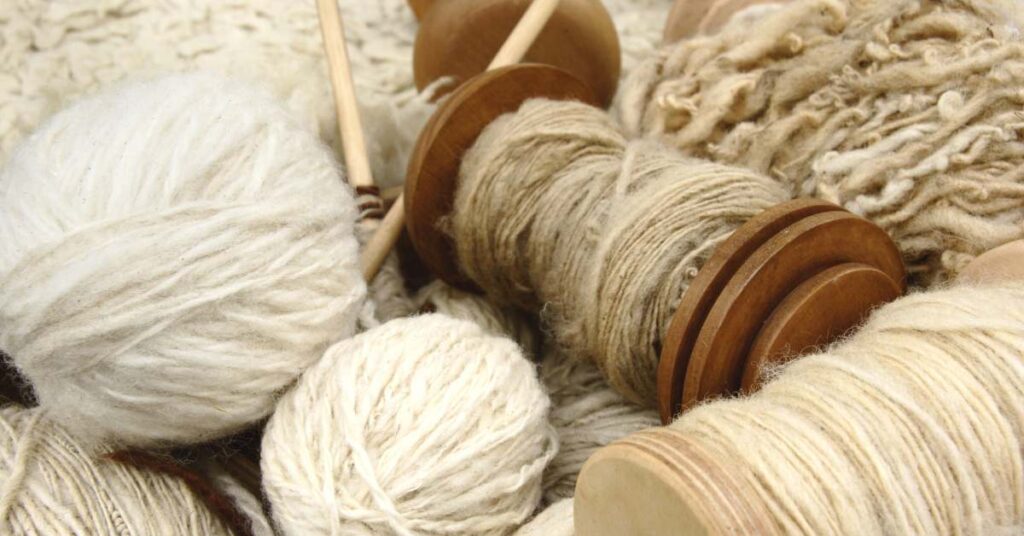
Many conventional clothing and bedding fabrics, especially synthetics, are treated with chemicals that can off-gas or leach into your skin.16
Opt for natural fibers like organic cotton, linen, hemp, or bamboo in your bedding, towels, and clothing. These materials are free from harmful chemicals and more sustainable and biodegradable. This swap ensures that your skin, the body’s largest organ, is in contact with safer, more breathable materials.
#14 Use Soy-Based or Beeswax Candles
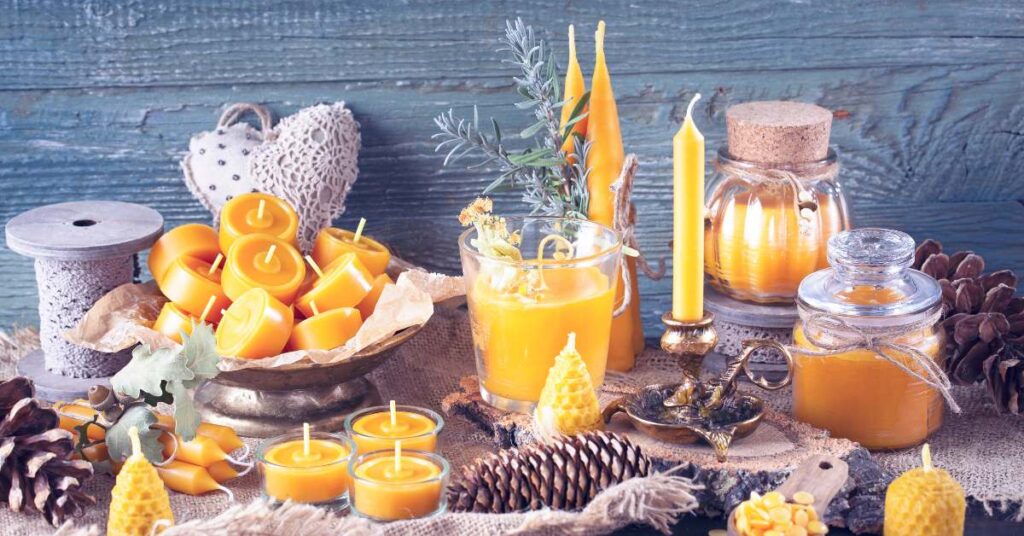
Conventional candles often contain paraffin, a petroleum byproduct that releases harmful chemicals when burned. Switching to toxin-free candles made from natural substances like beeswax or soy is a healthier choice. These candles burn cleaner and do not emit toxic compounds, improving the air quality in your home. Plus, they often come with the added benefit of a longer burning time. Enhance your home’s ambiance safely with our handpicked selections in 7 Best Non-Toxic Wax Melts & DIY Beeswax Melt Recipe, where we highlight the finest non-toxic candle and wax melt companies.
#15 Opt for Eco-Friendly Personal Hygiene Products
Many personal hygiene and personal care products, such as toothpaste, shampoos, and deodorants, contain chemicals, like cosmetics, that can be absorbed through your skin or mucous membranes.17
Choose products made with natural ingredients, free from sulfates, parabens, and artificial fragrances. Various eco-friendly, toxin-free options that are effective and help reduce exposure to potentially harmful substances are now available.
I hope you feel empowered and inspired as we wrap up these tips for creating a healthier, toxin-free living space. Remember, each small step you take makes a significant difference in creating a healthier environment for you and your loved ones. Whether choosing a safer cleaning product, opting for organic foods, or simply bringing more greenery into your living space, these 15 swaps and tips are just the beginning of a journey towards mindful, non-toxic living.
We love to hear from our readers. What’s your favorite way to reduce toxic substances in your home? Drop your thoughts in the comments.
Related Posts:
10 Best Non-Toxic Wall Plug-Ins + Alternative Air Fresheners
10 Best Eco-Friendly Automatic Toilet Bowl Cleaners
Bamboo Charcoal Air Purifiers: Do They Actually Work?
Best Non-Toxic DIY Room Spray With Essential Oils
References:
To access the reference, click on the text link. To return to the related section in the article, click the return arrow.
- Journal of Xenobiotics ↩︎
- American Lung Association and American College of Asthma, Allergy and Immunology ↩︎
- Environmental Working Group ↩︎
- University of Technology Sydney ↩︎
- Time and World Economic Forum ↩︎
- EWG, Cleveland Clinic, and American Lung Association ↩︎
- The Ecology Works ↩︎
- Agency for Toxic Substances and Disease Registry/CDC ↩︎
- Healthline ↩︎
- United States Environmental Protection Agency ↩︎
- National Institute of Health ↩︎
- David Suzuki Foundation ↩︎
- American Lung Association and the American College of Asthma, Allergy and Immunology ↩︎
- National Institute of Health ↩︎
- Forbes ↩︎
- Environmental Science and Pollution Research International and European Commission ↩︎
- National Institute of Health ↩︎
